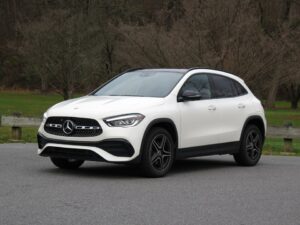Future of Car Insurance: How Self-Driving Cars Will Disrupt the Industry
The automotive industry is undergoing a seismic shift with the rise of self-driving cars. As autonomous vehicles (AVs) become more mainstream, they promise to revolutionize not just transportation but also the car insurance sector. With advancements in AI, machine learning, and sensor technology, insurers must adapt to a future where human error—the leading cause of accidents—is drastically reduced.
In this article, we explore how self-driving cars will reshape car insurance, the challenges insurers face, and what the future holds for this evolving industry.
How Autonomous Vehicles Change the Risk Landscape
Traditional car insurance models are built around human drivers—assessing risk based on driving history, age, and behavior. However, self-driving cars rely on AI-driven systems, reducing accidents caused by:
- Distracted driving
- Speeding
- Drunk driving
- Fatigue
According to the National Highway Traffic Safety Administration (NHTSA), 94% of accidents result from human error. With AVs minimizing these risks, insurers must shift focus from driver liability to technology and manufacturer accountability.
Key Disruptions in Car Insurance
- Shift from Personal Policies to Product Liability
- Insurers may move from covering individual drivers to underwriting automakers and software providers.
- Manufacturers like Tesla, Waymo, and Cruise could bear more responsibility for accidents caused by system failures.
- Usage-Based Insurance (UBI) and Real-Time Data
- Telematics and IoT sensors will enable dynamic pricing models based on real-time driving data.
- Insurers may charge premiums based on miles driven, routes taken, and AV performance.
- Cybersecurity and Software Risks
- Hackers targeting autonomous systems pose new threats, requiring cyber insurance add-ons.
- Insurers must develop policies covering data breaches and AI malfunctions.
- Declining Premiums but New Coverage Needs
- Fewer accidents could lower premiums, but new risks (e.g., sensor damage, software glitches) will emerge.
- Consumers may need specialized coverage for autonomous tech repairs.
Challenges for the Insurance Industry
- Regulatory Uncertainty: Governments must establish AV liability laws, complicating policy frameworks.
- Data Privacy Concerns: Insurers accessing real-time driving data must ensure GDPR and CCPA compliance.
- Resistance from Traditional Insurers: Legacy companies may struggle to adapt to AI-driven underwriting.
The Road Ahead: What’s Next for Car Insurance?
As Level 4 and Level 5 autonomy (fully self-driving cars) become a reality, the insurance industry must innovate. Future trends may include:
- On-Demand Insurance: Pay-per-mile or per-trip models.
- Blockchain for Claims: Smart contracts automating payouts.
- AI-Powered Risk Assessment: Predictive analytics for personalized premiums.
Conclusion: Adapting to an Autonomous Future
The rise of self-driving cars will disrupt car insurance, forcing insurers to rethink risk models, liability, and customer needs. While premiums may drop, new coverage demands will emerge, requiring agile, tech-savvy insurers to stay competitive.
For now, the industry must prepare for a future where cars drive themselves—but insurance still needs a human touch.
Brought to you by Radites – Innovating the future of insurance solutions.

